Literature
Schneider Max, Architekt Wilhelm Brodtbeck-Buess, 1873 bis 1957, in: Baselbieter Heimatblätter 1978, Heft 2, 304
Wilhelm Eduard Brodtbeck (25 September 1873 in Liestal - 12 April 1957, in Liestal) was a Swiss architect from Liestal canton Basel-Country.
Wilhelm Eduard, son of Wilhelm senior (architect and cement factory owner) and Susanne Karoline Spinnler, grew up in Liestal.
Primarily Wilhelm Brodtbeck visited schools in Liestal and then at a later age in Basel. He then studied architecture, concluding at the University of Stuttgart und at the University of Karlsruhe. Later he made various studium journeys in Germany, Holland, Austria, Italy and France, hereafter Brodtbeck worked in Lausanne.
He married Susanna Elisabeth Buess from Wenslingen, Basel-Country, in 1904.
Wilhelm Brodtbeck founded his own architect's office in 1901 in Liestal. As young architect he accomplished a large variety of residential houses. Later he expanded his horizon and realized schools complexes and industrial buildings.
As from 1921, together with his partner Fritz Bohny, he managed the architecture bureau W. Brodtbeck AG. In 1952 Rolf Georg Otto was invited by Brodtbeck to take over the well recognized business. The two founders members withdrew themselves from the daily business. Bohny retired, but Brodtbeck remained in the board of directors as president until his death in 1957. The well renowned firm still exists today under the name Otto und Partner.
Throughout the district of Basel, the architect's bureau W. Brodtbeck AG became famous due to their modern style buildings. Be it in partnership work with other companies, W. Brodtbeck AG were able to realise two important projects in Basel city. These are the city of Basel casino (1939–1941) and, for the chemical enterprise Sandoz, the administrative and head office building.
Further important projects from Brodtbeck's architecture bureau are, for example, the school complex "Rotackerschulhaus" in Liestal, the bank "Kantonalbank" in Binningen, the mill complex, including the small power station, in Lausen, Basel-Country, (1923) and the building complex for the salt mines in Schweizerhalle by Muttenz.
To the afore mentioned, addendum, the residential estate Wasserhaus (1920/21) in the sub-district „Neue Welt“ in Münchenstein. The Wasserhaus estate was developed by Brodtbeck concluding the original plans drawn by Prof. Hans Benno Bernoulli, Basel, (1876–1959). Due to the unique archetype nature and the prototypical neighbourhood, the Wasserhaus estate was taken up in the Swiss Inventory of Cultural Property of National and Regional Significance. Inventar der schützenswerten Ortsbilder (ISOS).
Wilhelm Brodtbeck worked 20 years in the commission for the municipality („Gemeindekommission") of Liestal and he was member of the board of management of the Basel protected historic site/landmark (Heimatschutzes).
Wilhelm Brodtbeck also wrote poems, pageants and prose:
Schneider Max, Architekt Wilhelm Brodtbeck-Buess, 1873 bis 1957, in: Baselbieter Heimatblätter 1978, Heft 2, 304

Liestal, formerly spelled Liesthal, is the capital of Liestal District and the canton of Basel-Landschaft in Switzerland, 17 km (11 mi) south of Basel.
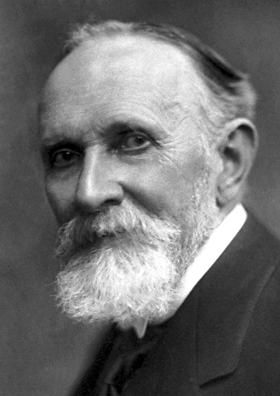
Carl Friedrich Georg Spitteler was a Swiss poet who was awarded the Nobel Prize for Literature in 1919 "in special appreciation of his epic Olympian Spring". His work includes both pessimistic and heroic poems.

Egon Eiermann was one of Germany's most prominent architects in the second half of the 20th century. He was also a furniture designer. From 1947, he was Professor for architecture at the Technical University of Karlsruhe.
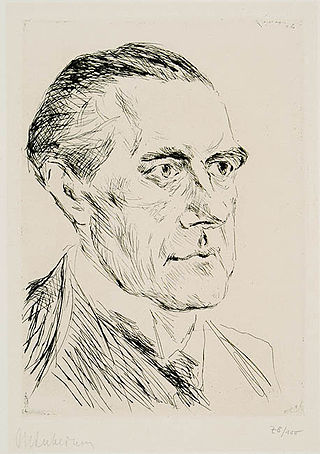
Peter Behrens was a leading German architect, graphic and industrial designer, best known for his early pioneering AEG Turbine Hall in Berlin in 1909. He had a long career, designing objects, typefaces, and important buildings in a range of styles from the 1900s to the 1930s. He was a foundation member of the German Werkbund in 1907, when he also began designing for AEG, pioneered corporate design, graphic design, producing typefaces, objects, and buildings for the company. In the next few years, he became a successful architect, a leader of the rationalist / classical German Reform Movement of the 1910s. After WW1 he turned to Brick Expressionism, designing the remarkable Hoechst Administration Building outside Frankfurt, and from the mid 1920s increasingly to New Objectivity. He was also an educator, heading the architecture school at Academy of Fine Arts Vienna from 1922 to 1936. As a well known architect he produced design across Germany, in other European countries, Russia and England. Several of the leading names of European modernism worked for him when they were starting out in the 1910s, including Ludwig Mies van der Rohe, Le Corbusier and Walter Gropius.

Augusta Raurica is a Roman archaeological site and an open-air museum in Switzerland located on the south bank of the Rhine river about 20 km east of Basel near the villages of Augst and Kaiseraugst. It is the site of the oldest known Roman colony on the Rhine.

The Hagenbund or Künstlerbund Hagen was a group of Austrian artists that formed in 1899. The group's name derived from the name Herr Hagen, the proprietor of an inn in Vienna which they frequented.
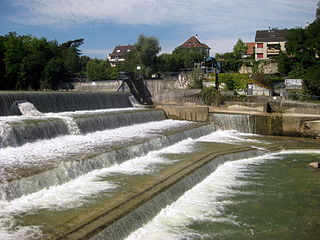
Münchenstein is a municipality in the district of Arlesheim in the canton of Basel-Landschaft in Switzerland.

Schloss Ebenrain is a former country residence in Sissach, in the canton of Basel-Country, Switzerland. Built in 1774–1776, it is considered the most significant late baroque residence in northwestern Switzerland. It is now a public facility and the site of an agricultural school. It is listed as a Swiss cultural property of national significance.
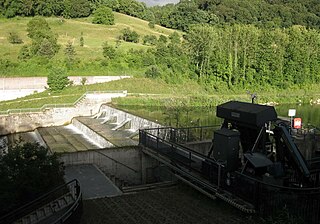
The residential estate Wasserhaus is in the sub-district Neue Welt, Münchenstein, Basel-Country near Basel (Switzerland)
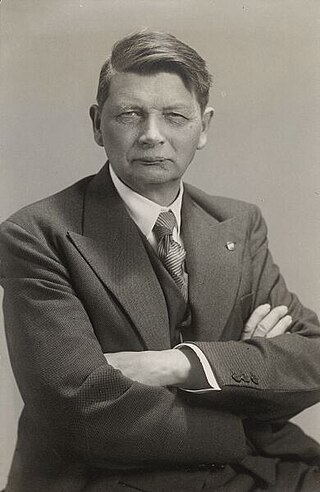
Hans Benno Bernoulli was a Swiss architect and city planner.
The Neue Welt is a sub-district of Münchenstein, in the canton of Basel-Country in Switzerland.
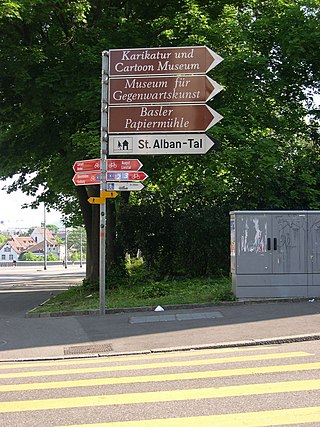
The Basel museums encompass a series of museums in the city of Basel, Switzerland, and the neighboring region. They represent a broad spectrum of collections with a marked concentration in the fine arts and house numerous holdings of international significance. With at least three dozen institutions, not including the local history collections in the surrounding communities, the region offers an extraordinarily high density of museums compared to other metropolitan areas of similar size. They draw some one and a half million visitors annually.
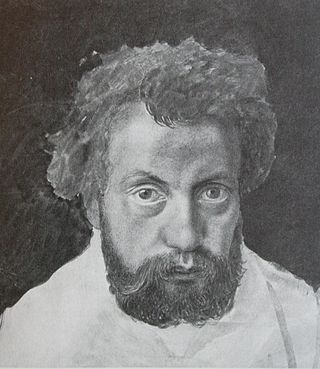
Karl Jauslin was a Swiss painter and illustrator, known mostly for historical and battle scenes.

The Swiss Central Railway was one of the five major private railway companies of Switzerland. The SCB with a track length of 332 kilometres was integrated into the Swiss Federal Railways (SBB) in 1902.

Schilling & Graebner was an architecture firm based in Dresden, Germany, founded by the architects Rudolf Schilling (1859–1933) and Julius Graebner (1858–1917) in 1889. The firm was under their direction from 1889 until Graebner's death, but continued to exist until 1947, most notably under Graebner's son Erwin (1895–1945). The firm, which initially devoted itself primarily to historicism and later to Art Nouveau and early modernism, worked on mainly buildings in Saxony, including several noteworthy churches, Dresden villas, administrative buildings and entire residential districts. One of the firms' most important works is the Christuskirche in Dresden (1903—05), which arguably marks the transition of sacral architecture in Germany from historicism to modernity.
The Seyler family is a Swiss family, originally a patrician family from Liestal near Basel. Family members served as councillors and Schultheißen of Liestal from the 15th century, later also as members of the Grand Council of Basel. A Hamburg branch descended from the banker and renowned theatre director Abel Seyler became by marriage a part of the Berenberg banking dynasty, co-owners of Berenberg Bank and part of Hamburg's ruling class of Hanseaten.
Gruner AG, with headquarters in Basel, is a Swiss engineering services company. It has 21 subsidiaries at 33 sites in Switzerland, Europe and International. The business activities include project development, general planning and consultancy tasks in building construction and infrastructure development, safety consulting, renovation, project management and controlling. The Gruner Group has over 1000 employees from over 50 different professions.
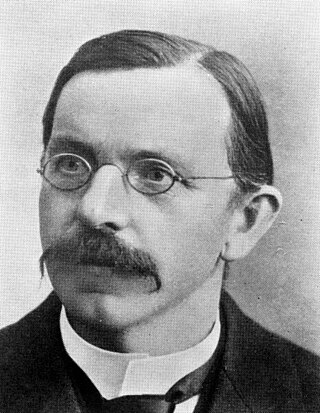
Karl Wilhelm Ritter was a civil engineer, professor of the Swiss Federal Institute of Technology Zurich, and later rector of the Polytechnic Institute of Zurich (1887–1891).
Hanro International GmbH, with headquarters in Götzis in Austria, produces lingerie, nightwear, and loungewear for men and women. The company’s products can be found in almost 50 countries and are sold at specialty retailers, department stores, and its own 14 boutiques and outlet stores. The company was founded in 1884 in Liestal, Switzerland, by Albert Handschin. The Huber Group acquired the company in 1991.
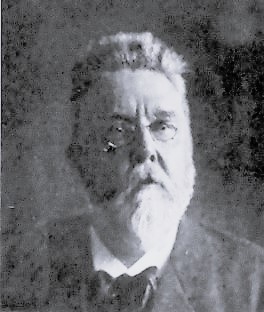
Christoph Carl Adolf Hehl was a German architect and academic teacher who focused on church buildings. He was professor of medieval architecture at the Technische Hochschule in Berlin.